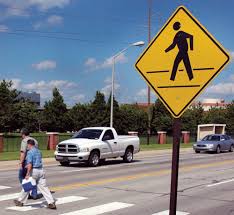Navigating roadways safely is a shared responsibility for drivers, pedestrians, and cyclists alike. Oklahoma’s right-of-way laws play a critical role in ensuring that everyone understands their duties in traffic situations. These regulations aim to prevent accidents, reduce confusion, and improve the overall flow of traffic.
Whether you’re driving through Oklahoma’s bustling cities or its serene countryside, knowing the state’s right-of-way laws can help you make informed and safe decisions. Here’s an in-depth look at the key aspects of these laws, their implications, and why they matter.
What Are Right-of-Way Laws?
Right-of-way laws determine who has the legal right to proceed first in various traffic situations. These laws are essential in preventing chaos on the roads, especially at intersections, pedestrian crossings, and merging lanes.
In Oklahoma, these rules are outlined in the state’s traffic code. Drivers are required to yield under certain conditions, such as to emergency vehicles, school buses, or pedestrians in crosswalks. Violations can result in penalties, including fines and points on a driver’s record.
Key Situations Covered by Oklahoma’s Right-of-Way Laws
Intersections Without Traffic Signals
When approaching an intersection without traffic control signals or signs, Oklahoma law requires drivers to yield to vehicles already in the intersection. If two vehicles arrive simultaneously, the driver on the left must yield to the driver on the right.
For detailed regulations, drivers can refer to the Oklahoma Department of Public Safety’s Driver Manual.
Pedestrian Crosswalks
Pedestrians have the right of way at marked and unmarked crosswalks in Oklahoma. Drivers are legally required to stop and allow pedestrians to cross safely. Failure to yield to pedestrians in crosswalks can result in fines and even liability in the event of an accident.
Emergency Vehicles
Drivers must yield to emergency vehicles such as police cars, ambulances, and fire trucks when they are using sirens and flashing lights. Oklahoma law mandates that drivers pull to the right-hand side of the road and stop until the emergency vehicle has passed.
Highways and Merging Lanes
When merging onto a highway, vehicles entering the roadway must yield to the traffic already on the highway. Similarly, drivers are expected to adjust their speed to allow smooth merging.
These rules are designed to ensure safety on Oklahoma’s highways, which are among the busiest in the region.
Special Considerations for Cyclists and Motorcyclists
Oklahoma’s right-of-way laws also apply to cyclists and motorcyclists, who are increasingly sharing the road with motor vehicles. Cyclists are required to follow the same rules as drivers, including yielding at intersections and adhering to traffic signals.
Motorcyclists, who are more vulnerable in collisions, are often given special protections under Oklahoma law. Drivers are reminded to check their blind spots and exercise caution when turning or merging to avoid accidents with motorcyclists.
For more information on cycling laws, visit the Oklahoma Department of Transportation’s Bicycle Safety Guide.
Consequences of Violating Right-of-Way Laws
Ignoring right-of-way rules can have serious consequences. Common violations include failing to yield at intersections or ignoring pedestrians in crosswalks. These actions can lead to accidents, injuries, and even fatalities.
In Oklahoma, violators can face fines ranging from $100 to $500, depending on the severity of the incident. Additionally, points may be added to a driver’s license, potentially increasing insurance premiums. Repeat offenses can result in license suspension.
Oklahoma’s Department of Public Safety provides a detailed breakdown of the penalties for traffic violations.
How Oklahoma Educates Drivers
The state of Oklahoma places a strong emphasis on driver education to reduce right-of-way violations. New drivers are required to complete a comprehensive driver education program that includes lessons on right-of-way laws.
Additionally, the state regularly updates its traffic guidelines to address emerging challenges, such as increased bicycle traffic or the use of autonomous vehicles. Public awareness campaigns are also conducted to educate drivers, cyclists, and pedestrians about their responsibilities.
Improving Road Safety in Oklahoma
While Oklahoma’s right-of-way laws are clear and effective, there is always room for improvement. State authorities continue to invest in infrastructure upgrades, such as better road signage and pedestrian-friendly designs, to enhance safety.
Local communities are also playing a role by advocating for stricter enforcement of traffic laws and organizing workshops on road safety. Residents can learn more about ongoing initiatives by visiting the Oklahoma Department of Transportation.
Conclusion
Oklahoma’s right-of-way laws are a cornerstone of road safety, helping to prevent accidents and ensure smooth traffic flow. Whether you’re a driver, cyclist, or pedestrian, understanding these rules is crucial for protecting yourself and others.
By adhering to these laws and staying informed about updates, Oklahomans can contribute to safer and more efficient roadways across the state. For detailed information and resources, visit the Oklahoma Department of Public Safety or the Oklahoma Department of Transportation.
Disclaimer – Our team has carefully fact-checked this article to make sure it’s accurate and free from any misinformation. We’re dedicated to keeping our content honest and reliable for our readers.








